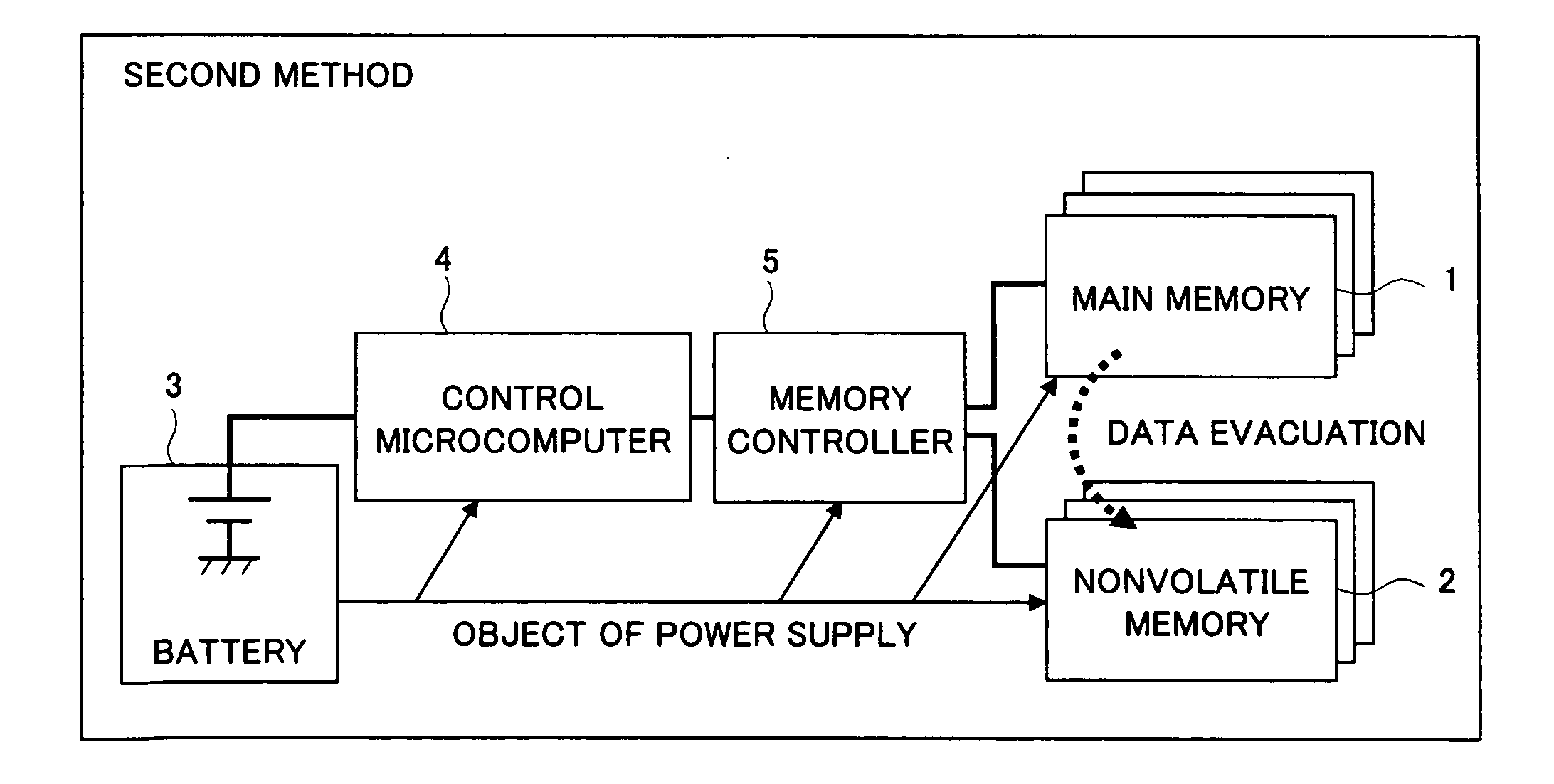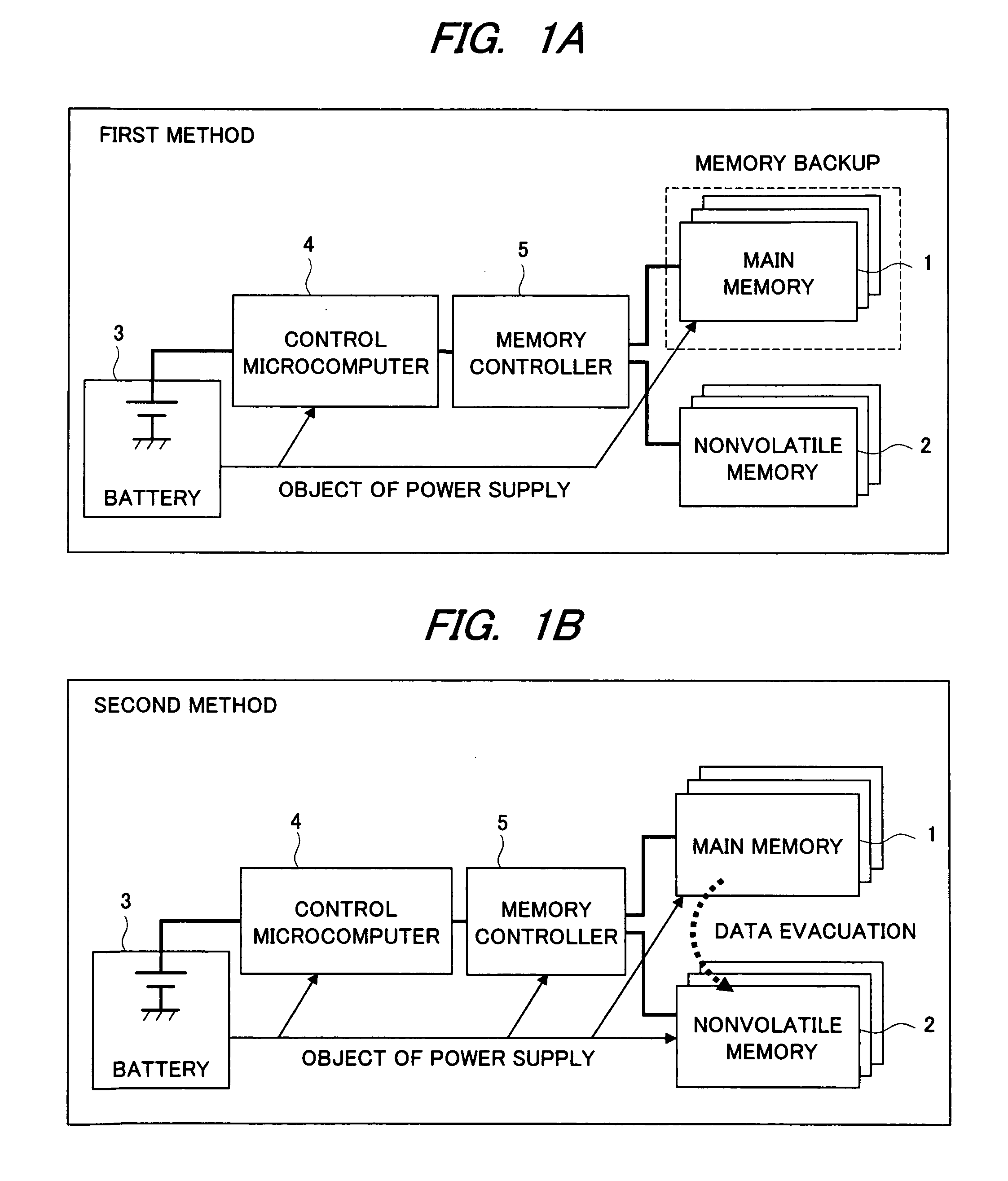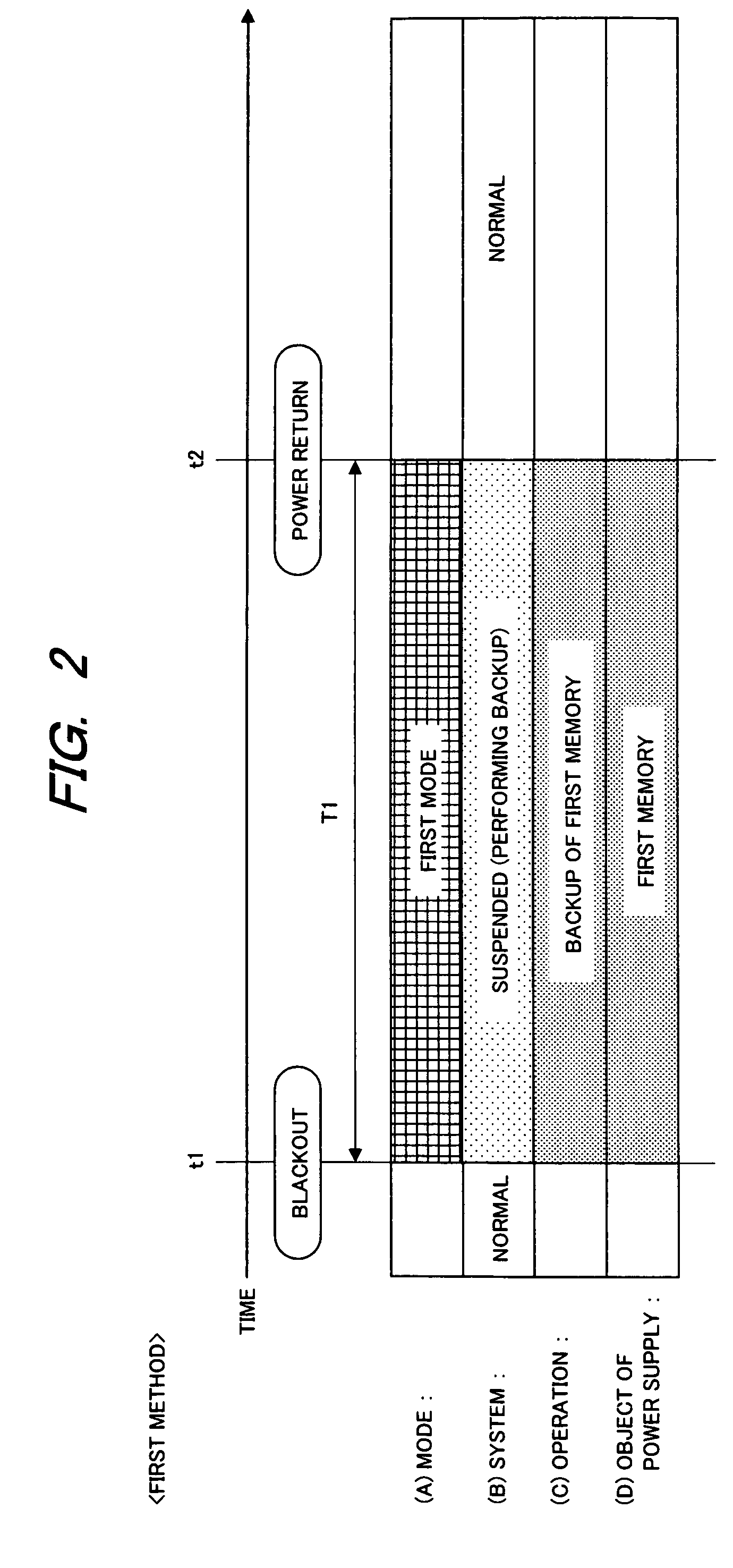Disk array device
a technology of array devices and disks, applied in the field of disk array devices, can solve the problems of large amount of battery consumption (backup power), limited physical size and cost of battery capacity mounted on a device, and long time required for a backup time, so as to achieve small battery capacity, longer blackout time, and large battery capacity
- Summary
- Abstract
- Description
- Claims
- Application Information
AI Technical Summary
Benefits of technology
Problems solved by technology
Method used
Image
Examples
Embodiment Construction
[0055]
[0056]First of all, conventional technologies (first method and second method), which are used as a prerequisite art in the present embodiment, will be described with reference to FIGS. 1 to 3. Contents of the conventional arts are the basically same as that of the present embodiment.
[0057]
[0058]FIG. 1A shows a block configuration of a device according to the first method (“memory backup method”). The configuration of the disk array device includes a main memory (first memory) 1, a nonvolatile memory (second memory) 2, a battery 3, a control microcomputer 4, and a memory controller 5. The control microcomputer 4 is connected with the main memory 1 and the nonvolatile memory 2 via the memory controller 5. The control microcomputer 4 and the like are connected with the battery 3, and the power can be supplied (discharge) to the respective components from the battery 3.
[0059]The control microcomputer 4 controls the entire system including the memory controller 5 and the like. The...
PUM
 Login to View More
Login to View More Abstract
Description
Claims
Application Information
 Login to View More
Login to View More - R&D
- Intellectual Property
- Life Sciences
- Materials
- Tech Scout
- Unparalleled Data Quality
- Higher Quality Content
- 60% Fewer Hallucinations
Browse by: Latest US Patents, China's latest patents, Technical Efficacy Thesaurus, Application Domain, Technology Topic, Popular Technical Reports.
© 2025 PatSnap. All rights reserved.Legal|Privacy policy|Modern Slavery Act Transparency Statement|Sitemap|About US| Contact US: help@patsnap.com



